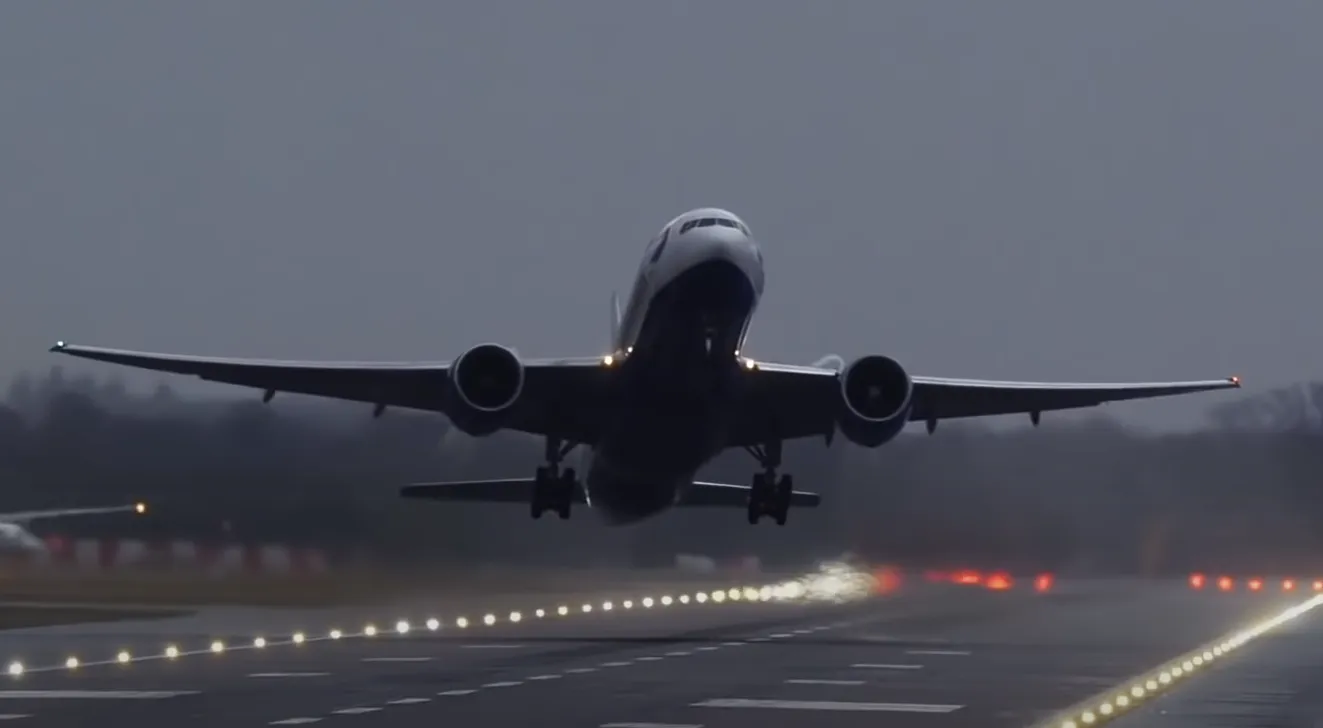
Extreme crosswind landings at Gatwick Airport
Oct 20, 2020

Extreme crosswind landings at Gatwick Airport pose significant challenges for pilots due to the airport's location and prevailing weather conditions. These situations arise when strong winds blow perpendicular to the runway, requiring pilots to employ advanced techniques to maintain control during descent and landing. The turbulence can lead to a bumpy experience for passengers as the aircraft sways and adjusts to the wind. Air traffic controllers play a crucial role in guiding pilots during these landings, ensuring safety while managing the flow of incoming flights. Successful crosswind landings showcase a pilot's skill and the aircraft's engineering capabilities.
When it comes to aviation, landing in extreme crosswinds is one of the most challenging tasks for pilots. At Gatwick Airport, known for its busy air traffic and diverse weather conditions, extreme crosswind landings present unique challenges that require skill and precision. Understanding the dynamics of crosswind landings not only benefits pilots but also informs passengers about the complexities involved in safely landing an aircraft.
Understanding Crosswinds
Crosswinds occur when there is wind blowing perpendicular to the runway direction. This can lead to significant challenges during landing as pilots must maintain control of the aircraft while compensating for the lateral force exerted by the wind. At Gatwick, which has runways oriented approximately north-south, crosswinds can be particularly impactful during strong weather systems, especially in the winter months.
The Challenges of Extreme Crosswind Landings
Extreme crosswind landings require pilots to use a technique known as "crabbing." This involves angling the aircraft into the wind to maintain a straight flight path toward the runway. As the aircraft approaches the ground, pilots must transition from crabbing to aligning the aircraft with the runway to ensure a safe touchdown. The following factors contribute to the complexity of extreme crosswind landings:
- Aircraft Type: Different aircraft have varying levels of crosswind tolerance based on their size, weight, and wing design. Larger aircraft may handle crosswinds differently than smaller ones.
- Wind Speed: The strength of the wind significantly influences the landing process. At Gatwick, crosswinds exceeding 30 knots can pose significant challenges for pilots.
- Runway Conditions: Wet or icy runways can exacerbate the risks associated with crosswind landings, making it crucial for pilots to adjust their approach accordingly.
Gatwick Airport's Runway and Wind Patterns
Gatwick Airport has one main runway (Runway 08/26) which runs in a northwest-southeast direction. This orientation means that the airport frequently experiences crosswinds, especially from the southwest and northwest, depending on prevailing weather patterns. The following table outlines some typical wind patterns observed at Gatwick:
| Wind Direction | Typical Speed (Knots) | Crosswind Component (Knots) |
|---|---|---|
| Northwest | 15-25 | 10-20 |
| Southwest | 20-30 | 15-25 |
| East | 10-20 | 5-10 |
| South | 20-35 | 0-15 |
Safety Measures and Protocols
To ensure safety during extreme crosswind landings, Gatwick Airport employs various protocols and measures. Pilots receive extensive training on managing crosswind conditions, including simulator training that replicates extreme weather scenarios. Additionally, air traffic control plays a critical role in guiding pilots during challenging landings. They provide real-time wind information and may advise on holding patterns or diverting to other airports if conditions become untenable.
The airport also utilizes advanced weather monitoring systems to provide accurate forecasts and real-time updates on wind conditions, allowing pilots to make informed decisions prior to landing. This data is crucial for maintaining a high safety standard, especially during periods of adverse weather.
Passenger Experience During Crosswind Landings
For passengers, experiencing an extreme crosswind landing can be unsettling. However, modern aircraft are equipped with sophisticated technology designed to assist pilots in managing challenging landing conditions. It is essential to remember that pilots are highly trained professionals who routinely handle such situations. Passengers can take comfort in knowing that both the aircraft and the crew are well-prepared for extreme crosswind landings.
Additionally, Gatwick Airport's commitment to safety ensures that all flights adhere to strict operational standards. In the event of severe crosswinds, flight delays or cancellations may occur, prioritizing passenger safety above all else.
Conclusion
Extreme crosswind landings at Gatwick Airport represent a complex interplay of aviation skill, technology, and safety protocols. Understanding the challenges faced by pilots during these landings can enhance passenger appreciation for the intricacies of air travel. While crosswinds can pose significant challenges, the rigorous training and advanced technologies employed by airlines ensure that safety remains the top priority during every landing at Gatwick.
As travelers, being informed about the conditions that affect your flight can help ease any anxiety associated with flying. Next time you experience a crosswind landing, remember the expertise and dedication of the aviation professionals working hard to ensure a safe arrival.
Related Articles

Explore Thailand: The Best Islands to Visit for Paradise, Adventure, and Relaxation

The Ultimate Guide to the Best Islands in Thailand for Your Next Getaway

Do babies need passports? How to get a passport for a newborn

How to get a U.S. passport fast: here’s how to expedite the process

What is Mobile Passport Control: 5 reasons why you should use it

SENTRI vs. Global Entry: A detailed guide

Do you need a passport to go to the Bahamas? Let’s find out

Do you need a passport to go to Mexico? A detailed guide

Do you need a passport to go to Canada? We got the answer

Do You Need a Passport for a Cruise: An Essential Travel Guide

Booster Seat Requirements: All the Rules to Follow in Your Rental Car

What Are the World’s Most Powerful Passports, and How Does Yours Rank?

How to Take a Passport Photo at Home: A Helpful Guide

You've got to have heart! Southwest's new livery

Your opinion: Should water be free on low cost carriers?

Young women bolder than guys as solo travellers
